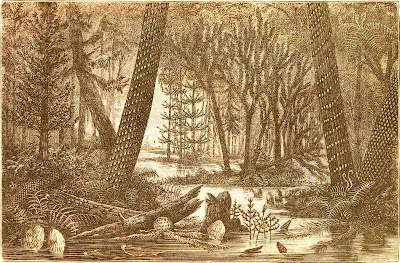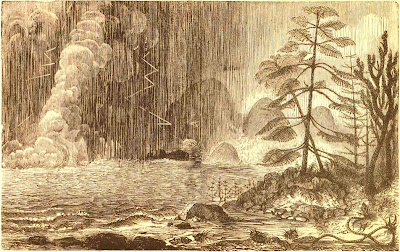"The observer who glances over a rich and fertile plain, watered by rivers and streams which have, during a long series of ages, pursued the same uniform and tranquil course; the traveller who contemplates the walls and monuments of a great city, the first founding of which is lost in the night of ages, testifying, apparently, to the unchangeableness of things and places; the naturalist who examines a mountain or other locality, and finds the hills and valleys and other accidents of the soil in the very spot and condition in which they are described by history and tradition - none of these observers would at first suspect that any serious change had ever occurred to disturb the surface of the globe. Nevertheless, the earth has not always presented the calm aspect of stability which it now exhibits; it has had its convulsions, and its physical revolutions, whose story we are about to trace."



















"The object of "The World before the Deluge" is to trace the progressive steps by which the earth has reached its present state, from that condition of chaos when it "was without form and void, and darkness was upon the face of the the deep," and to describe the various convulsions and transformations through which it has successively passed."
'The World Before the Deluge' by Louis Figuier (1872 revision of the 1862 text) is online at 19th century science.
****UPDATE: A full (and better quality) 1863 edition of this book has now been uploaded by Strasbourg Digital Library.
- The Library of Congress have a blog.
- Brian Sawyer (Craftzine, Makezine) has a blog - bookbinding and craft.
- The only thing I've seen at the British Library's 'Sacred' online gallery is an exquisite Ethiopian bible in the Turn the Pages section (I haven't quite worked out yet what exactly is 'new' here).
- 'Discover Islamic Art in the Mediterranean' contains >600 artefacts from 14 countries in 18 exhibition sites, assembled by 90 curators from the productive output of 1200 years. (multiple languages) For each exhibition site, click the 'more information' and any other links around to find everything available. (first appearances are a little deceptive).
- Revolutionary Players is another vast site I've hardly looked at "focusing on the history of the Industrial Revolution in the West Midlands in Britain between the years 1700 and 1830." [via]































